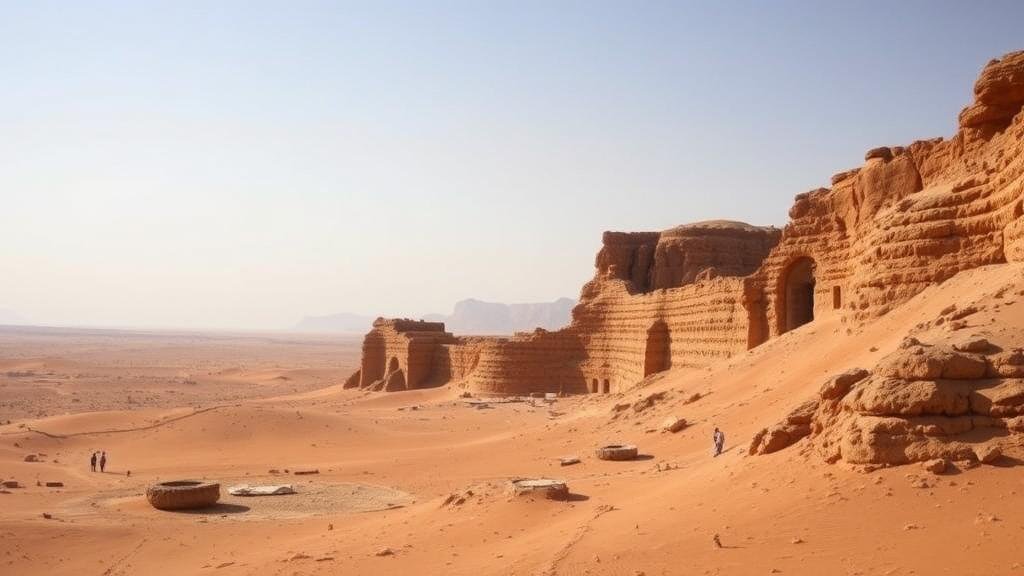Following the clues to Nabta Playa, a prehistoric settlement hidden in the Sahara.
Following the Clues to Nabta Playa: A Prehistoric Settlement Hidden in the Sahara
Nabta Playa, located in the southern part of Egypts Nubian Desert, is a significant archaeological site that offers insights into prehistoric human civilization. Discovered in the late 20th century, this settlement is renowned for its sophisticated architecture, complex socio-economic structures, and astronomical alignments. Dating back to approximately 5000 BC, Nabta Playa serves as a remarkable testament to early human ingenuity and adaptability in one of the worlds most extreme environments.
The Discovery of Nabta Playa
The site was serendipitously discovered in 1974 by a team led by archaeologist Fred Wendorf. Upon excavation, Wendorf and his team unearthed an array of artifacts, including pottery, tools, and structures that indicated a settled community. The finds suggested that Nabta Playa was an oasis where prehistoric peoples gathered for social, cultural, and economic exchange.
The Significance of the Site
Nabta Playa is particularly noteworthy for several reasons:
- Agricultural Practices: The evidence of domesticated animals and early farming techniques indicates a transition from nomadic lifestyles to settled agricultural society, around 6000 BC.
- Astronomical Alignments: The arrangements of stones, including the enigmatic stone circle, suggest an early understanding of celestial events such as solstices and equinoxes, pointing to the importance of astronomy in their daily lives.
- Trade Networks: Artifacts found at the site imply a significant degree of trade, evidenced by tools and pottery styles consistent with other regions across North Africa, suggesting a broad connectedness in the prehistoric period.
Architecture and Artifacts
The architecture at Nabta Playa includes structures built from local stones, which provide insights into the building techniques and resource management of the people who inhabited the area. Some of the most prominent discoveries include:
- The Stone Circle: A ceremonial structure that has drawn parallels to similar structures found in other regions, indicating a broader cultural significance.
- Small Animal Figurines: Pottery fragments decorated with animals suggest that artistry and creativity were integral components of these early societies.
The Environmental Context
Located 600 kilometers from modern-day Cairo, the landscape surrounding Nabta Playa was fundamentally different during its peak, around 5000-3000 BC. Now a seemingly inhospitable desert, the region then possessed lush vegetation and abundant water sources, which favored a burgeoning settlement. Research shows that climatic changes gradually turned the area arid, pushing communities to migrate toward the Nile Valley.
The Cultural Implications
The discoveries at Nabta Playa have major implications for our understanding of prehistoric African cultures. They challenge long-held views that most early civilizations emerged exclusively along river valleys. advanced settlement patterns and social structures uncovered at Nabta Playa illustrate that significant developments occurred in arid regions, emphasizing the diversity and adaptability of early human societies.
Modern Research and Conservation Efforts
As archaeology continues to evolve, Nabta Playa remains a focal point for ongoing research. Modern techniques, such as ground-penetrating radar and satellite imagery, are increasingly used to explore the site further. There is also an emphasis on conservation, as climate change and human activity threaten the integrity of this invaluable archaeological treasure. Scholars are working with local governments and international organizations to promote awareness and protection of this historic settlement.
Actionable Takeaways
For those interested in prehistory and archaeology, Nabta Playa offers several insights:
- Understanding the role of environment in shaping human societies can provide perspectives on how contemporary societies may respond to climate change.
- Studying the interactions between different prehistoric cultures can illuminate the complex web of human connections that have existed for millennia.
- Engaging in conservation efforts highlights the importance of preserving archaeological sites for future generations.
To wrap up, Nabta Playa is more than just a remnant of the past; it is a vibrant narrative of human resilience and ingenuity. The archaeological work undertaken at this site transports us back to a time when humanity was beginning to understand and manipulate its environment, paving the way for the intricate societies that would follow.



